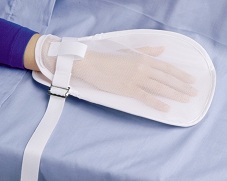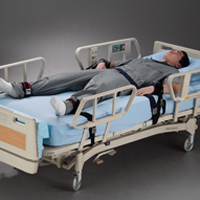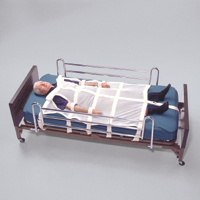Blog Roll: (Contributors)
» Hulet Smith, OT
» Megan Smith, PT
» Mike Price, OT
Topics:
Adaptive Devices
Adult Tricycles
Air Purifier
Allergy
Alternative Communication Devices
Alzheimer's Dementia Products
Aquatic Products
Arthritis Relief Products
Autism
Back Relief
Ball Pit/Pool
Bariatric
Bath Benches
Bathtub Lift
Bed Rails
Bedsores / Decubitus
Bidet
Body Solid Exercise Products
Breast Feeding Products
Bushel Trucks
Cancer
Catheters
CEU
Changing Bench
Child Car Seats
Child Care Products
Christmas Gifts
Clinic/Medical Equipment
Clinical Furniture
Cold and Flu
Communication Devices
Compression Garments
Computer Products
CPAP
Crutches
Daily Assistance Products
Daylight Lamps
Dental Care
Diabetes
Doctor's Office
Dysphagia
Electrodes
Electrolarynx
Emergency Preparedness
Ergonomic Equipment
Exam Tables
Exercise Products
Eyecare
Family Tricycles
First Aid Kits
Floor Scales
Fluidotherapy
Foot Drop
Foul Weather Gear
Furniture
Gait Trainers
General Articles
General Posts
Glassless Mirrors
Hand Sanitizer
Head Protection Helmets
Hearing Impaired
Heart Health
Heating Pad
Hip Fractures
Home Assistance Products
Home/Office Assistance
Hospital Beds
Hoyer Lifts
Hyperbaric chamber
Hyperthermia/Hypothermia
Ice/Hydration Carts
Impotence Products
Incontinence Products
Infection Control Gowns
Inspirational Stories
Lift Chairs
Light Therapy
Low Vision Products
Massage Tables & Chairs
Massage Units
Maternity
Medical Facility Products
Medical Scales
Multi-Sensory Environment
Natural Healing
Nebulizers
Non-Hospital Bedding
Nutritional Supplements
Office Furniture
One-Handed Products
Operating Room Devices
Ostomy Products
Oxygen Compressors
Oxygen Concentrator
Oxygen/Nebulizer Masks
Pain Relief
Paraffin Unit
Patient Lift
Patient Lifts
Patient Restraints
Patient Transfer Systems
Pediatric Bath Chairs
Pediatric Furniture
Pediatric Learning
Pediatric Recreation
Personal Listening Devices
Personal Warming Products
Physical Therapy
Pill Organizers
Pillows
Playground Equipment
Pool Lifts
Press Releases
Procedure Chairs
Pulse Oximeter
Reading Assistance
Reference Materials
Rehab Equipment
Rehabmart News
Rehabmart Newsletter
Respiratory Health
Rollators
Saunas
Scooters
Seniors
Shower Chairs
Shower Commode Chairs
Shower Gurney
Showers Chairs
Side Access Bathtubs
Skin Tear
Special Needs Dinnerware
Special Needs Seating
Special Report Articles
Splints
Sport Injuries
Standers
Staying Home
Stethoscopes
Stimulus Reward Toys
Stress Relief
Stroke
Strollers
Summertime Products and Summertime Fun
Talking Products
Therapy Balls
TheraTogs
Thermometers
Traction Devices & Tables
Treatment Tables
Ultrasound
Vibroacoustic Therapy
Vision Products
Walk-In Bathtub
Walking Aids
Walking Boot
Weighted Wearables
Wheelchair Accessories
Wheelchair Cushions
Wheelchair Lifts
Wheelchair Ramps
Wheelchair Transfer Systems
Wheelchairs
Women's Health
Work Hardening Products
Wound Care
Posey Restraints for Medical Facilities
The following products come under the jurisdiction of a Federal law that restricts the following restraint devices to be sold or used without a physician's prescription, and can only be shipped to a Licensed Healthcare Facility.
The reason for the above statement by both the Feds and Posey, the manufacturer, is that medical restraints are not for fun and games. I have worked within mental health facilities for a dozen years and I can tell you that whenever I had to put someone in restraints, it was not fun and games for either the patient or myself. To be restrained against one's will gives a feeling of vulnerability and loss of control. These two fear-based feelings will often lead an already anxious person to a whole new level of anxiety. When a person is restrained within a professional medical facility, he or she will usually understand that the physical restraints are temporary, and after some time has elapsed and the patient has calmed down to a safer and calmer behavior, he or she will usually understand that there is a cause and effect situation that will lead to being unrestrained and unharmed.
One of the main reasons for restraining someone revolves around the word "harm". If a person is at the moment a potential harm to either himself or others and he becomes agitated to the point of not listening to reason, or loses the ability to decrease dangerous behavior, more often than not he might be physically restrained. To restrain somebody should not be taken lightly and should be used only as a therapeutic reason to prevent harm. For this reason, the following restraint products are exclusively offered to medical professionals and medical facilities.

The Safety Mitt fits over a patient's hand like a mitten and is used to hold a patient's hands in place either by tying the safety mitt to the side of a bed or chair. This is very important for the safety of both the patient and the caregiver by preventing accidental or premeditated harm by the patient from scratching, gouging, or grabbing hair, clothes, IV tubing, bandages or items to throw. The mitt is made with a cool, breathable weave, has a one inch webbing with a locking side buckle, and flexible stays for added support.

For patients who need to be restrained while in a bed but who are still "bucking" and throwing their body trunk around, the Posey Fifth Point Restraint is needed. "5-Point Restraints" are for patients who have the four extremities (both wrists and both ankles) restrained on a bed but need a fifth restraint across the thighs, pelvis, or chest to help reduce further injury, providing a supplemental restraint for a "bucking" patient. This high-strength two inch polypropylene webbing will secure to a movable part of the bed by using a quick-release or locking buckle. Usually when releasing a patient from a 5-point restraint set, the 5th restraint is the first to be released.

If a difficult or unpredictable patent needs to be transported, a Posey Straitjacket can be used. Helping to control an unruly patient, the patient is placed into the straitjacket by first putting their arms into the long-sleeved jacket arms which then cross in front and are secured through a vertical loop at the patient's chest before being buckled on the back of the jacket, essentially pinning their arms to their body. A pelvic strap is also connected which will prevent the patient from pulling the straitjacket over their head.

For combative patients who need their arms free and unmoving for the medical staff to be able to take vital signs and administer medication, the Posey Restraint Net is very helpful. Padded cuffs for the upper arms, wrists, and ankles will help hold and limit the four limbs in place, leaving the patient's head, arms, and feet exposed while the rest of the body is comfortably covered by durable nylon mesh. The body mesh can offer some form of comfort for aggravated patients, allowing some body movement for the patient (compared to the 5-point restraint that prohibits trunk movement) and security from harming themself or others. The net cross-straps secure to the bedspring frame with easy-to-use D-ring fasteners. The netting openings for the arms and head are padded for additional patient comfort.

The Posey Clean Cuff Set is used by mental health professionals, EMTs, and law enforcement personnel when the strongest ankle and wrist restraints are required. The cuffs are made with a unique laminated material which outperforms standard handcuffs in both strength and durability, and the stainless steel swivel and pre-attached 32 inch polypropylene straps will allow quick and proper cuff orientation for the situation. The cuffs can be quickly sized to the wrist and ankles to ensure a proper fit, deterring patient or prisoner tampering and self-release. The cuffs are also color-coded for quick identification and can also be repeatedly sanitized. Patients come in all shapes, sizes, and varying strength, and having these strong restraints within a medical facility or law enforcement facility is a must for the safety of patients, visitors and staff.
Working with mentally ill or highly aggressive patients is a danger for patients and staff, and while restraining a person may seem cruel and extreme, it is, at times, a needed therapeutic device. Personally, working in psychological lock-up hospitals, drug/alcohol recovery centers, and as a Psychiatric Medic in the military over the years, I have been scratched, punched, gouged, kicked, cut, slapped and stabbed, among other things which I care not to mention, all while working with psychiatric patients. I have also witnessed patients do the same things to themselves, including attempting suicide and bodily injury to others. Therefore, while restraining a person is not a fun or enjoyable choice for anyone to make, it can be a lifesaving therapeutic mode when needed and Posey restraints are a tried and true product in restraining devices.
Bill Stock
Executive Editor,
Content & Social Media Services
and
Hulet Smith, OT
Rehabmart Team Leader & CEO
